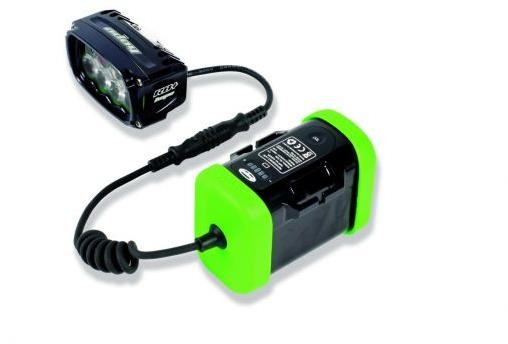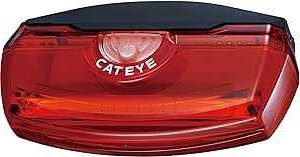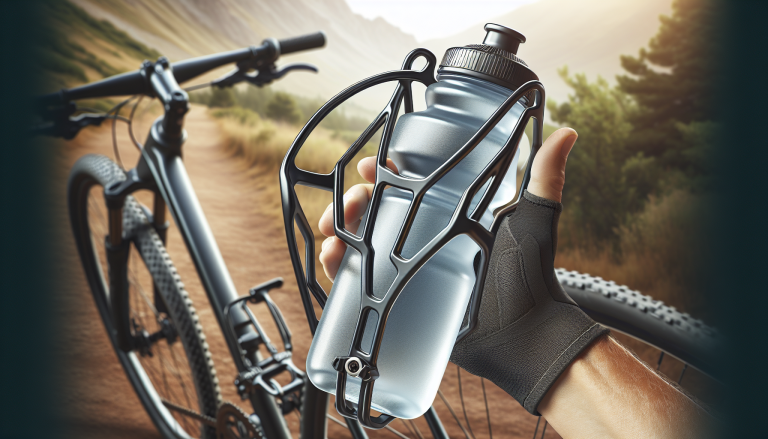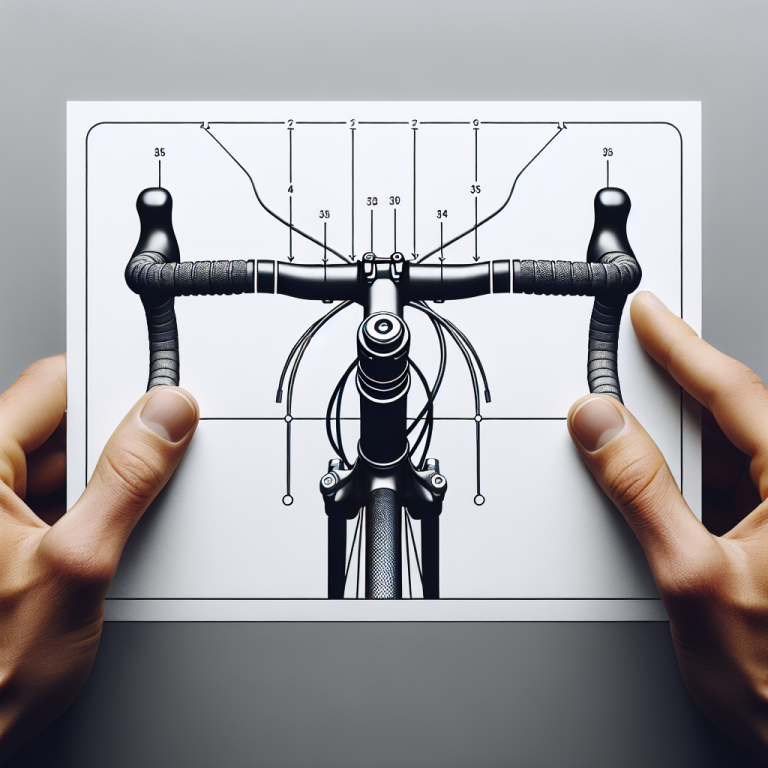Cyclists, rejoice! Here’s your comprehensive guide to cycling lights, because being seen is essential for your safety on the road. In this article, we will cover everything you need to know about selecting the right lights, installing them on your bike, and staying visible in any conditions. Don’t let the darkness limit your cycling adventures; read on to discover how to illuminate your way and be seen by others while pedaling through the great outdoors.
Table of Contents
ToggleWhy Cycling Lights are Important
Cycling lights are an essential accessory for any cyclist, whether you’re commuting to work or enjoying a leisurely ride on the weekend. They serve three primary purposes: increasing visibility, improving safety, and complying with the law.
The market is awash with good brands of lights for your bike such s the following, Hope, Bontrager, Garmin, Trek, Lezyne, Exposure, Topeak, Halfords, Cateye and Niterider to name a few. Do your research using our simple guide below and choose the lights which suit your personal needs, it is best to be seen all year round at any time of day in any conditions, extra visibility ensures you are seen by motorists and pedestrians helping you to enjoy a safe day on your bike.
Increase Visibility
One of the main reasons why cycling lights are important is to increase your visibility on the road. Especially during low-light conditions, such as early mornings, dusk, or at night, having powerful front and rear lights can make all the difference in ensuring that drivers and pedestrians can see you clearly. By enhancing visibility, cycling lights greatly reduce the risk of accidents and collisions.
Improve Safety
Cycling lights also play a crucial role in improving your safety while on the road. By illuminating your path ahead, front lights help you navigate through dark areas or poorly lit streets, preventing unexpected obstacles that could lead to accidents. Rear lights, on the other hand, alert vehicles approaching from behind of your presence, reducing the chances of being hit from behind. These lights act as a safety precaution that can save lives and prevent serious injuries.
Comply with the Law
In many countries, it is a legal requirement for cyclists to have working front and rear lights when riding at night or during low-light conditions. Not only does complying with the law ensure your safety, but it also helps you avoid getting fined or facing legal consequences. By investing in cycling lights, you not only protect yourself but also demonstrate responsibility as a cyclist and respect for the rules of the road.
Types of Cycling Lights
When it comes to cycling lights, there are several types available to choose from, each serving a specific purpose and offering unique features. Here are some of the most common types:
Front Lights
Front lights are designed to illuminate the path ahead of you, helping you to see and navigate in the dark. They come in various types, including traditional beam lights and newer LED lights. Some front lights even offer adjustable brightness settings and different light patterns to accommodate your specific needs.
Rear Lights
Rear lights are essential for making you visible to vehicles approaching from behind. They usually come with different flashing modes to attract attention, ensuring that drivers can see you from a distance. Some rear lights also feature wider visibility angles, allowing you to be seen from various directions, increasing your overall safety on the road.
Helmet Lights
Helmet lights are mounted on your helmet, providing you with hands-free lighting. These lights can be particularly useful when cycling off-road or in areas with poor street lighting. With 360-degree visibility, helmet lights ensure that you are seen from all angles, further enhancing your safety.
Wheel Lights
Wheel lights are a fun and stylish addition to your cycling setup. These lights attach to your bicycle wheels and create a mesmerizing light display as you ride. While they may not contribute significantly to your visibility, they add a touch of personality and flair to your bike, making you stand out on the road.
Choosing the Right Lights
Now that you know the different types of cycling lights available, it’s important to choose the right lights for your needs. Here are some factors to consider when making your selection:
Consider Brightness
When choosing front and rear lights, consider the brightness levels they offer. Brighter lights ensure better visibility, especially in dark or foggy conditions. Look for lights with high lumen outputs to maximize your visibility on the road.
Opt for Rechargeable Lights
Investing in rechargeable cycling lights is not only environmentally friendly but also cost-effective in the long run. Rechargeable lights eliminate the need for constantly buying and replacing batteries, saving you money while reducing waste. Make sure to check the battery life and charging time of the lights you choose to ensure they meet your needs.
Check Battery Life
If you opt for lights that require batteries, make sure to check the estimated battery life. This is particularly important if you frequently ride for long distances or during extended periods at night. You don’t want your lights to die midway through your ride, compromising your safety on the road.
Evaluate Mounting Options
Consider the mounting options available for the lights you choose. Lights that come with versatile mounting options allow you to easily attach them to your bike, helmet, or other accessories. This flexibility ensures that you can position the lights in the most effective and convenient way for your cycling needs.
Front Lights Features
Front lights are crucial for illuminating your path ahead and ensuring your safety during night rides or in dark areas. Here are some important features to consider when choosing front lights:
Light Output
The light output of front lights is measured in lumens. A higher lumen output indicates a brighter light. Consider the level of brightness you require based on the types of roads or trails you typically ride on. If you frequently cycle in unlit areas, a higher lumen output may be necessary for better visibility.
Light Patterns
Some front lights come with different light patterns, such as steady beam, flashing, or strobe. These patterns serve different purposes and can help improve your visibility to others on the road. Flashing or strobe patterns can be particularly effective in attracting attention and alerting others of your presence.
Beam Distance
Another important factor to consider is the beam distance of the front lights. This refers to how far the lights can illuminate the road ahead. Consider the type of cycling you do and the level of visibility you need. If you frequently ride at high speeds or on open roads, lights with longer beam distances may be beneficial to give you more time to react to potential hazards.
Rear Lights Features
Rear lights are essential for making yourself visible to vehicles approaching from behind. Here are some features to consider when choosing rear lights:
Flashing Modes
Most rear lights offer different flashing modes, ranging from a steady beam to various flash patterns. These modes help attract attention and increase your visibility to drivers. Look for rear lights with multiple flashing options to find the one that suits your specific needs and preferences.
Visibility Angles
Consider rear lights that offer wider visibility angles. By being visible from multiple directions, you can significantly enhance your safety on the road. Lights with wider angles ensure that drivers approaching from different angles can spot you, reducing the risk of accidents.
Daytime Running Lights
Some rear lights have a dedicated daytime running mode designed to increase visibility during daylight hours. These lights emit a bright and noticeable beam during the day, making you more visible to motorists. Investing in rear lights with daytime running lights can greatly enhance your safety, even when riding in bright conditions.
Helmet Lights Features
Helmet lights offer hands-free lighting and 360-degree visibility, making them an excellent addition to your cycling gear. Here are some features to consider when choosing helmet lights:
Hands-Free Lighting
The primary advantage of helmet lights is that they provide hands-free lighting. Mounting the lights on your helmet ensures that the beam follows your line of sight, illuminating the area you are looking at, whether it’s the road ahead or the trail you’re navigating. This keeps your hands free to handle your bike and other equipment.
360-degree Visibility
Since helmet lights are mounted on your helmet, they provide visibility from all directions. This 360-degree visibility ensures that you are seen by motorists and pedestrians, even if they are approaching from an angle that may not be covered by your bike’s front or rear lights. This additional visibility can significantly increase your safety on the road.
Wheel Lights Features
While not necessarily contributing to your overall visibility, wheel lights add a touch of style and fun to your cycling experience. Here are some features to consider when choosing wheel lights:
Stylish and Fun
Wheel lights come in a variety of colors and patterns, allowing you to customize the look of your bike. They create a vibrant and eye-catching display as your wheels spin, adding an element of excitement and fun to your rides. Choose wheel lights that match your personality and style to make a statement on the road.
Side Visibility
In addition to the visual appeal they provide, wheel lights can also enhance your side visibility. When cycling in urban environments where vehicles and pedestrians may approach from the sides, having wheel lights can ensure that you are seen from a wider range of angles. This makes your presence on the road more apparent and helps reduce the risk of accidents.
Motion-Activated Lights
Some wheel lights are equipped with motion sensors that activate the lights when you start pedaling and turn them off when you come to a stop. This feature helps conserve battery life and ensures that the lights are only active when you are in motion. Consider motion-activated wheel lights for a convenient and energy-efficient lighting solution.
Installation and Placement
Once you have chosen the right cycling lights for your needs, it’s important to install and position them correctly for optimal visibility. Here are some guidelines for placement:
Front Lights Placement
Front lights are typically mounted on the handlebars of your bike. When installing them, ensure that they are secure and facing forward, with the beam pointing slightly downward. This position helps prevent the light from blinding oncoming traffic while illuminating the road ahead effectively.
Rear Lights Placement
Rear lights are usually mounted on the seatpost or the back of your bike. Position them in a way that ensures they are at an appropriate height and angle to be seen by vehicles approaching from behind. Make sure they are securely fastened to prevent them from coming loose during your ride.
Helmet Lights Placement
Helmet lights should be mounted securely on your helmet. Follow the manufacturer’s instructions for proper installation. Ensure that the lights are positioned correctly, facing forward, and angled slightly downward to illuminate the area you are looking at while preventing the beam from shining directly into the eyes of others.
Wheel Lights Placement
Wheel lights are typically attached to the spokes of your bike wheels. Install them evenly around the wheel, ensuring that they are securely fastened. Take care to position the lights in a way that does not interfere with the spinning of the wheels or the functionality of any braking systems.
Maintenance and Care
To ensure the longevity and effectiveness of your cycling lights, regular maintenance and care are essential. Here are some tips to keep in mind:
Clean Lights Regularly
Dirt, dust, and other debris can accumulate on your lights over time, reducing their brightness and effectiveness. Regularly clean your lights using a soft cloth or a mild cleaning solution to remove any buildup. This will help ensure that your lights remain bright and visible on the road.
Inspect for Damage
Periodically inspect your lights for any signs of damage, such as cracks or loose connections. Damaged lights may not function properly or may be less visible to others on the road. If you notice any damage, take the necessary steps to repair or replace your lights to maintain their effectiveness.
Replace Batteries or Recharge
If you are using lights that require batteries, make it a habit to regularly check the battery levels. Replace the batteries when they are low to ensure that your lights remain bright and visible. For rechargeable lights, make sure to recharge them fully before each ride to avoid unexpected power shortages.
Additional Safety Tips
While cycling lights are essential for visibility and safety, there are additional measures you can take to further enhance your safety on the road. Here are some tips to keep in mind:
Use Reflective Gear
In addition to cycling lights, wearing reflective gear, such as a reflective vest or ankle bands, can greatly increase your visibility to others on the road. Reflective materials reflect light, making you more visible, especially in low-light conditions. Combining reflective gear with cycling lights ensures that you are seen from multiple angles, further reducing the risk of accidents.
Obey Traffic Laws
Always adhere to traffic laws and regulations when cycling. Obey traffic signals, yield to pedestrians, and use hand signals to indicate your intentions. By following the rules of the road, you not only ensure your safety but also contribute to a safer and more harmonious cycling environment for everyone.
Be Mindful of Others
When sharing the road with pedestrians and vehicles, it’s important to be mindful of others. Give pedestrians the right of way, maintain a safe distance from vehicles, and signal your intentions clearly and in advance. Respecting and being considerate of others on the road fosters a positive cycling experience and promotes a safer cycling community.
In conclusion, cycling lights are vital for increasing your visibility, improving your safety, and complying with the law. By choosing the right lights, installing them correctly, and maintaining them properly, you can enhance your visibility on the road, reduce the risk of accidents, and enjoy a safer and more enjoyable cycling experience. Remember to also practice additional safety measures, such as using reflective gear and obeying traffic laws, to further enhance your safety and contribute to a positive cycling environment. Happy and safe cycling!








